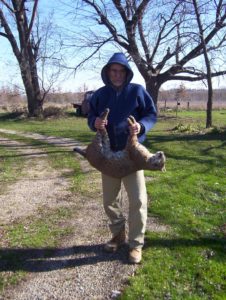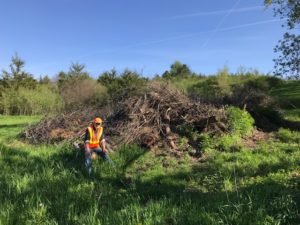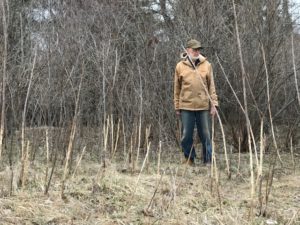Creating Bobcat Habitat
So far, it’s been a bad news, good news story for our local bobcats. The steady loss of habitat, plus uncontrolled hunting for a century, greatly reduced their numbers across the Corn Belt. In 1973, the Endangered Species Act, and subsequently the CITES Treaty, banned export of cheetah, leopard, and ocelot pelts, so furriers worldwide quickly switched to bobcat and lynx. A quality bobcat pelt that sold for $15 at fur auction in 1970 was worth between $500-600 by 1982. By 1977 bobcats were listed as endangered in Iowa, after they had nearly vanished from the state. With some legal protection, they slowly began to infiltrate back into southern Iowa from unplowed areas in Missouri, Kansas, and Nebraska, especially favoring river corridors. The 1998 edition of Mammals of Eastern U.S. says the bobcat “…is no longer found in…Iowa…” (p. 493). The 1999 edition of Mammals of North America temperate and arctic regions shows a great gap in bobcat distribution, which essentially coincides with the Corn Belt (p. 255).

Johnson County’s first “documented” bobcat – photo by Mark Müller.
My first clue that their recovery had reached our area came in November 2004 when Rob Williams found a dead one in “my” South Sycamore stormwater wetland near the soccer fields in the southeast corner of Iowa City. Liz Maas delivered the bobcat to me and my autopsy indicated that it had been run over by a vehicle, probably on Sand Road.
In the meantime, Iowa DNR surveys confirmed that the species was beginning to thrive again across southernmost Iowa (bow hunters, with their stealth, are the most reliable observers). In 2007 a limited trapping/hunting season opened in the two southern tiers of counties, and to date the cats are continuing to thrive there in spite of the additional mortality from trapping. I suspect that the greater metropolitan Iowa City complex is probably a bottleneck in their northward migration along the Iowa River corridor.
You may be upset that a native species, which you have not yet even seen in the wild, is being hunted; but there is something we can all do to insure it will continue to thrive and spread. The key, as for most native species, is habitat, and for our bobcat, stream corridors are especially important. Rabbits are their single most important food item, followed by mice, voles, and squirrels.

My bunny factory, which has been producing for about 30-35 years.
And for breeding bunnies, nothing beats a thoughtfully made brush pile. It’s a good use for all that Asian honeysuckle and autumn olive you’ve been clearing. Lacking those, another simple plan is to fell a half-dozen adjacent trees so they all fall into a pile. The canopy gap will let in sunshine, birds will perch on the branches and deliver seeds, and within a couple of years it will be an overgrown tangle, perfect for bunnies, mice, and bobcats. Do this on somewhat elevated and sloping ground so that baby bunnies don’t get drowned in spring floods.
I have a bunny factory at home, about the size of a four-car garage. The snow around it in the winter is covered with rabbit tracks, there is usually a hawk perched in the nearest tree, and my twilight walk near it often spooks up an owl.

Bark stripped from staghorn sumac shoots last winter. The older parts of this clone will send up new shoots to replace them.
And all those bunnies need to eat in winter, when snow and ice cover low vegetation. Their top choice is a nearby thicket of staghorn sumac and they strip the bark from young shoots from snowline to as high as they can reach.
Staghorn sumac also has other wildlife value – see Survival Food for the Birds and also see Building a Better Brushpile. So the linkage here is bobcat – brushpile – bunny – sumac. And the first link is sunshine. Staghorn sumac will tolerate, even thrive on, a variety of soils from sand to the edge of a wetland, but needs full sun to do well. And if you are thinking about planting some, remember that it is very clonal and over the years will sprawl out to create a thicket. The bunnies and the bobcats will thank you.


